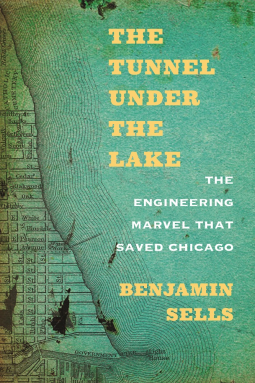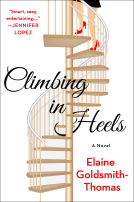
The Tunnel under the Lake
The Engineering Marvel That Saved Chicago
by Benjamin Sells
This title was previously available on NetGalley and is now archived.
Send NetGalley books directly to your Kindle or Kindle app
1
To read on a Kindle or Kindle app, please add kindle@netgalley.com as an approved email address to receive files in your Amazon account. Click here for step-by-step instructions.
2
Also find your Kindle email address within your Amazon account, and enter it here.
Pub Date May 15 2017 | Archive Date Apr 18 2017
Description
Despite Chicago's location beside the world’s largest source of fresh water, its low elevation at the end of Lake Michigan provided no natural method of carrying away waste. As a result, Chicago began to choke on its own sewage collecting near the shore. The befouled environment, giving rise to outbreaks of sickness and cholera, became so acute that even the ravages and costs of the American Civil War did not distract city leaders from taking action.
Chesbrough's solution was an unprecedented tunnel five feet in diameter lined with brick and dug sixty feet beneath Lake Michigan. Construction began from the shore as well as the tunnel’s terminus in the lake. With workers laboring in shifts and with clay carted away by donkeys, the lake and shore teams met under the lake three years later, just inches out of alignment. When it opened in March 1867, observers, city planners, and grateful citizens hailed the tunnel as the "wonder of America and of the world."
Benjamin Sells narrates in vivid detail the exceptional skill and imagination it took to save this storied city from itself. A wealth of fascinating appendixes round out Sells’s account, which will delight those interested in Chicago history, water resources, and the history of technology and engineering.
Advance Praise
“Benjamin Sells offers an interesting, meticulous, and thoroughgoing addition to the trove of books on Chicago.”—David Solzman, author of The Chicago River: An Illustrated History and Guide to the River and Its Waterways
Available Editions
| EDITION | Paperback |
| ISBN | 9780810134744 |
| PRICE | $24.95 (USD) |
| PAGES | 200 |
Featured Reviews
 Andy L, Reviewer
Andy L, Reviewer
This is one of those books about a topic I never even knew I was interested in. Indeed, I had barely even heard of the subject before I saw the book description. But during the mid 19th century, one of the biggest issues limiting the growth of Chicago was the issue of clean water-and its nasty cousin, sewage disposal. This book outlines the construction of a tunnel under Lake Michigan which helped solve that problem.
=== The Good Stuff ===
* It was a deceptively simple problem. Chicago needed a supply of drinking water. Conveniently, Chicago sits right next to one of the largest sources of fresh water on the planet, the Great Lakes. It would seem a simple problem to pipe some water from the lake into the municipal water system. But the problem was really sewage. Chicago dumped raw sewage, industrial and slaughterhouse waste, and just about anything else into the Chicago River, and thus Lake Michigan. To solve the problem of polluted water near the shoreline, the city conceived of a 2-mile-long intake tunnel well into Lake Michigan.
* The book describes the struggles needed to build this tunnel. As anyone familiar with Chicago politics can imagine, just getting the various governments on board was quite the challenge. There were also technical issues related to the construction of the tunnel and the associated water-works, and numerous other issues, both scientific and legislative to be worked through. All of these were covered, although in different levels of detail.
* The technical aspects of the tunnel were described, including techniques of construction and summaries of the technologies involved. I got a feel for how the boring was accomplished, as well as the masonry construction of the tunnel lining. Even more complex was the “crib”, which served as the water intake 2 miles offshore in Lake Michigan. While I would have liked more detail on these areas, it was enough to understand the basic techniques and serve as a map for further reading.
* Finally, Benjamin Sells introduces us to Ellis Sylvester Chesbrough, the engineer who conceived and build the tunnel. A man of vision, engineering ability and stubbornness, without Chesbrough, the tunnel, and probably the city of Chicago as we know it, never would have existed.
* Sells has a easy to read writing style, and the narrative keeps moving. I read the book in a single sitting, and was left wanting more.
=== The Not-So-Good Stuff ===
* The author insists on giving us many names of characters that only appear once, and have no bearing on the story other than they voting for a certain city council resolution on some aspect of the project. It became “skip-over” reading.
* Some of the facts, particularly the financial ones, are a bit tough to understand in context. Without googling, I have no idea how much money $100,000 in 1860 was really worth. It would have been nice to include some benchmarks to help the reader understand. Similarly, the book takes place in a vacuum. Much of the work was performed in the 1860’s, a period during which much was going on in North America, some of which had to affect the tunnel and its finances.
* Finally, as an engineer, I would have preferred some clearer definitions of how things were built. There was enough to get the gist of how the tunnel was built, but not enough detail to really understand the technology and the struggles of construction. I suspect that much of this was lost to history. Similarly, while the ultimate fate of the tunnels was disclosed, I would have appreciated a couple paragraphs on the water system in modern-day Chicago.
=== Summary ===
All things considered, I enjoyed the book. I would have preferred more detail on some of the technical aspects, but considering that I never even knew the tunnels existed when I started the book, I did learn a lot.
I would recommend the book to anyone with a curiosity about how things work, especially in the 19th century, and anyone curious about how Chicago went from a mud flat to the “second city”.
 Joan A, Librarian
Joan A, Librarian
Interesting book that engineers, history buffs and local residents would enjoy.




